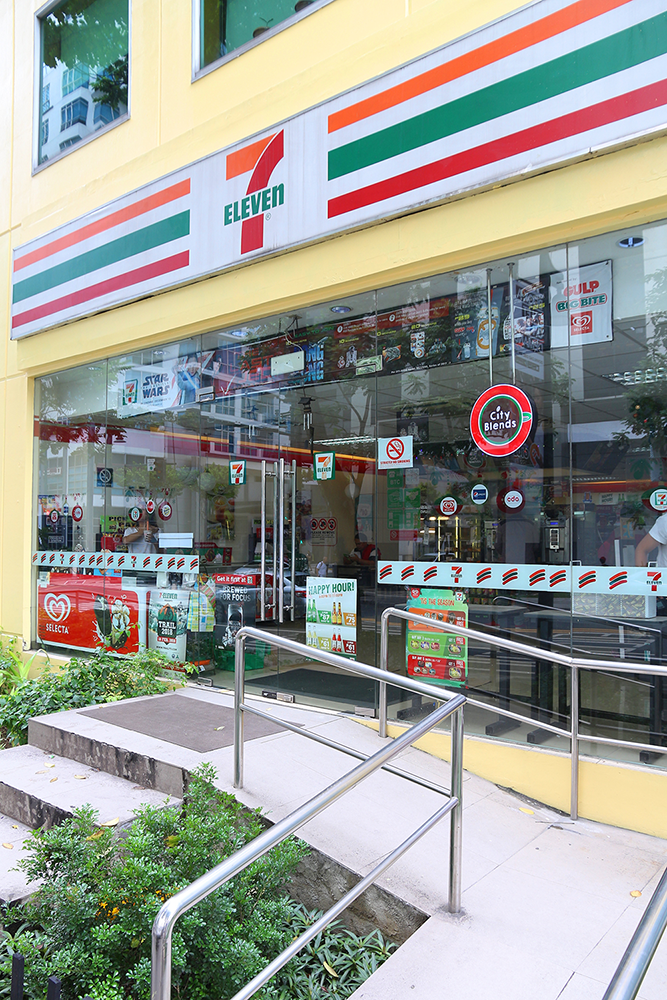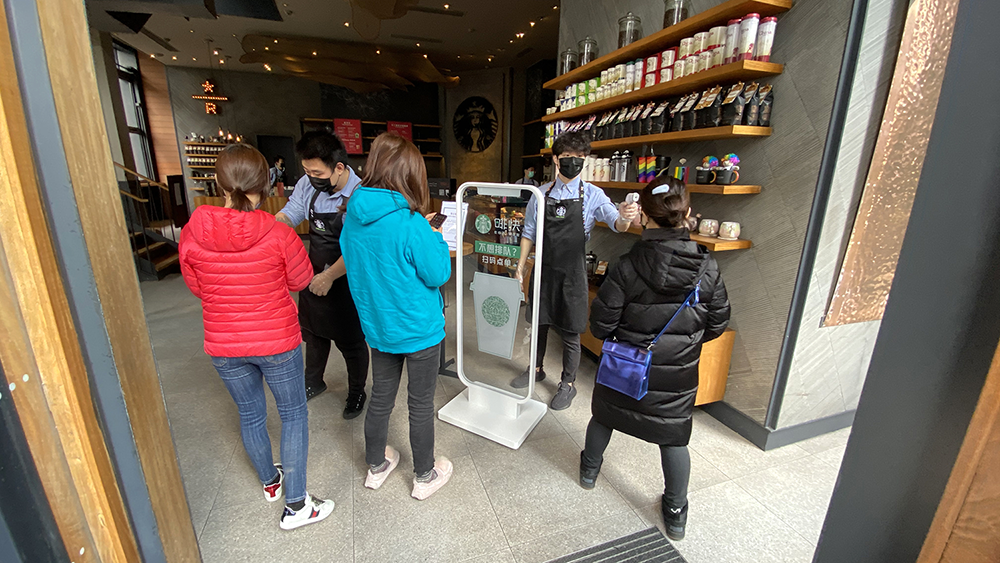As countries in Asia Pacific, including China, begin to emerge from the COVID-19 pandemic, convenience and forecourt retailers are finding new ways of engaging with their shopper base.
Online, unsurprisingly, has stolen the show—especially in China where the density of the population makes delivery services cost efficient. A new study, led by academics from the University of Greenwich, found major changes in food and grocery shopping behaviors in China as a result of the pandemic, with online purchases rising dramatically, while many customers remained loyal to small, local independent shops.
The study, led by Dr. Junxiong Li, based at the Marketing, Events and Tourism Department at the University of Greenwich, examined how Chinese consumers’ food shopping preferences changed during China’s nationwide lockdown. The study’s findings indicate that farmers markets lost more than half of their regular customers, while local small, independent food retailers enjoyed the highest levels of customer loyalty (75%) during the pandemic. Supermarkets lost more than a third of their regular customers. However, the biggest winner was online food shopping.
The findings pave the way for the future and necessary business response, as the study’s co-author, Dr. Andres Coca-Stefaniak, states: “Most experts agree that we may yet suffer new waves of COVID-19 infections and possibly new strains of the virus, particularly in the autumn, which gives the findings of this study an additional dimension and one we hope policymakers and key decision makers will heed.”
In China, local small independent food retailers enjoyed the highest levels of customer loyalty (75%) during the pandemic.
Consumers Turn to C-Stores
In Australia, where petrol and convenience stores were able to remain open during the pandemic and restrictions are now slowly being lifted on pubs, cafés and restaurants in some states, a study by the Australasian Association of Convenience Stores (AACS) and CMA Consulting also found smaller c-stores are being visited more as an alternative to supermarkets.
The survey of 500 regular convenience store shoppers and 500 regular supermarket shoppers found that for the two weeks ended March 31, 2020, 47% of supermarket shoppers and 44% of convenience shoppers were using small c-stores more frequently to purchase household products including milk, general groceries and paper products. The survey also showed that regular shoppers—mainly males 31-40 years old—are still using convenience stores for food-on-the-go.
Although supermarkets still rank as the first option for a shopping trip for one to three items, researchers found convenience stores are considered safer due to stores being less crowded, easier to get in and out of and more likely to have stock availability.
The survey endorsed the need for petrol and convenience stores to remain open, too, with 63% of convenience shoppers rating eight or above on an agreement scale that such stores should remain open during these times, and 47% of supermarket shoppers stating they will be likely to use petrol and convenience stores for items other than fuel during this period.
Australia’s Path to Recovery
Setting out a 10-point plan for the sector’s road to recovery, the AACS said it had successfully lobbied for the industry to be allowed to continue to operate during the pandemic, albeit with enormous health and well-being responsibilities delegated to staff and customers.
Australia is becoming a cashless society, and this trend is being accelerated.
“We do, however, see many businesses shuttered and government spending at levels never before seen to support small businesses and people affected by this virus,” the AACS said. “Many businesses are taking different approaches to keep trading and even innovate during these times as we can no longer just do business the old way.”
The association’s 10-point recovery plan includes:
- Banning further excise hikes on tobacco
- Allowing alcohol sales
- Removing supply-chain authorizations that favor supermarkets over smaller and independent retailers
- Instituting least-cost routing for electronic payments as the move away from cash intensifies
“Australia is becoming a cashless society, and this trend is being accelerated during the coronavirus pandemic,” AACS said. “Tap-and-go is becoming a far more frequently used method of transacting in convenience stores, increasing further as a result of measures such as social distancing. Convenience operators are stepping up to meet consumers’ expectations and preferences but are presently prevented from routing these tap-and-go transactions through the least costly payments network.”
The Philippines Experience
Expanding online retailing is top of the agenda at 7-Eleven in the Philippines, where community quarantine measures were imposed on March 16, with only one person per household allowed to leave and purchase necessities plus nighttime curfews. While the measures have been lifted in low-risk areas, and some businesses and offices are returning to work, they have hammered trade, according to Victor Paterno, president and CEO at Philippine Seven Corp.
Paterno reports that the customer count at his stores has been cut by two-thirds, although the average transaction has doubled. Foodservice has dropped by half. “We are selling coffee beans and frozen hot dogs,” he said. “It’s pretty bad but better than QSR.”
The supply chain has also been massively impacted, with the fill rate dropping from 80% to 30%. “Manufacturers have been unable to get people in factories or trucks across borders, and there was a mad scramble for essentials like everybody else,” Paterno said. In the Philippines, that’s compounded by the geography of the archipelago. “We run a complex logistics operation, and we felt it, but the islands that are dependent on tourism, which disappeared, got hit harder.”

Paterno plans to expand 7-Eleven’s online delivery capability shortly via warehouse fulfillment, with orders either picked up at convenience stores or delivered by courier. The retailer’s existing e-commerce business leverages its store network for orders placed through its CLiQQ loyalty program with fulfillment via delivery platforms such as Deliveroo. The potential is huge, said Paterno. He suggested online grocery penetration is half a percent, but the latent demand is 50%.
Despite the current lack of online infrastructure in the Philippines, small farmers have joined forces with aggregators to sell fresh produce online and deliver to homes. While 7-Eleven would prefer to stay clear of selling fresh and chilled foods online, there’s an opportunity to empower those farmers by supplying them with barcodes so they could package their products and drop off at a store.
The retailer also is accelerating plans to take seating out of stores and replace the space with essentials, while store openings and expansions have been put on pause, Paterno reported. Food-to-go will come back, he maintains, but only after a vaccine for COVID-19. In the meantime, as restrictions start to ease in provincial areas, 7-Eleven is beginning to see some promising upticks in sales, especially where alcohol bans are relaxed.
Re-negotiating with landlords is imminent, too, but Paterno is watching the stance taken by QSRs, which are currently taking a harder line. It’s no surprise since 7-Eleven closed 30% of its store network in April, largely because staff were unable to use public transport to get to work (20% remain closed as of this writing), and the chain introduced double “hazard pay” for staff.
When the head office returns to work, Paterno is insisting that everybody goes to the office at least once a week, unless they have pressing medical issues, since frontline workers should not be the only ones taking a risk. Ultimately, he believes routines will settle down, and he is optimistic for the future. Our businesses have not been as badly affected as some, and I am really excited about the online grocery opportunity,” he said.
On-Demand Delivery in China
Back in China, many offline retailers have shifted their activities to digital tactics, such as livestreaming and private WeChat groups, to keep their businesses alive, reported Elena Gatti, managing director of Azoya EU, an e-commerce solutions provider and expert in China market entry.
Tap-and-go is becoming a far more frequently used method of transacting in convenience stores, increasing further as a result of social distancing.
Grocery chains such as Alibaba’s Hema, which has been rebranded as Fresh Hippo, Tencent’s Super Species and JD.com’s 7Fresh have all seen abrupt increases in orders through their on-demand delivery services, which can be accessed through mini-apps on WeChat, Gatti said.
A Fresh Hippo spokesperson reported the brand is prepping six times the amount of fresh vegetables for its 50 stores in Shanghai, equivalent to 330 tons of groceries. JD Daojia, JD.com’s on-demand delivery service platform, which services the likes of Walmart and JD’s own grocery stores, also has seen a fivefold increase in sales.
“Since everyone in China is staying inside to stay away from the coronavirus, the only way for them to get food is through these on-demand delivery services, which explains why demand has skyrocketed,” explained Gatti. Customers can order whatever they want on the retailer’s WeChat mini-program store; each supermarket can deliver groceries to one’s door within an hour.”
During the coronavirus crisis in April, Hema opened a flagship e-commerce store on Tmall and hired a top influencer, Viya, to do a livestreaming session to promote sales. The store sold six million preserved crawfish lobsters within five seconds through the livestreaming program. The e-commerce store also is used to sell more long-tail, non-perishable items such as snacks.
Better Life (BuBuGao), a leading multiformat retailer with 100 stores in Hunan and Jiangxi Province, has worked with Tencent to expand its digital retail business through a WeChat mini-program store since 2018. It integrates inventory systems and acts as a mini-app e-commerce store so that customers can order and have supermarket items delivered within an hour. There is a three-step strategy to increase sales: door-to-door delivery, livestreaming and WeChat community marketing.

To increase sales during the coronavirus crisis, Better Life launched its first livestreaming session on WeChat on February 25, selling 400,000 Chinese yuan (US $55,974) of products in 30 minutes. Users placed 10,683 orders in the first two hours, and conversion rates reached 15.3%. Typically, China e-commerce conversion rates are around 3%, according to Gatti. The orders go directly from the warehouse to the customer, reducing crowds in the supermarkets.
7-Eleven China also is well on its digital journey, a bonus during the COVID-19 pandemic. The retailer has been working with Meituan to offer on-demand delivery services since 2018 and with JD Daojia since 2016. 7-Eleven stores on JD Daojia saw sales grow 400% after they were put onboard the platform in January 2018. In Beijing, all branches of 7-Eleven are on the Meituan food delivery platform, offering more than 1,000 SKUs to online users.
According to Gatti, people often buy soups and hot foods, such as meat and tofu sticks, from 7-Eleven. On the delivery apps, customers can specify re-heating requirements when placing an order, so that the food will be heated before delivery. Some refrigerated frozen foods also will be delivered with ice packs to keep them cool.
Elsewhere, the Japanese convenience store chain Family Mart announced a partnership with JD Daojia in 2018. Family Mart initially onboarded 212 stores in Beijing, Shanghai, Shenzhen and Chengdu to the platform but expanded its online branches to 1,000 within six months. Apart from online delivery, Gatti said Family Mart also offers self-service checkout and other new retail solutions in some of its physical stores, such as vending machines that provide different products based on customer demographics.
While convenience stores have fared relatively well during the COVID-19 pandemic, the crisis has highlighted the online opportunities for the sector with digital ordering solutions, electronic payments and multiple delivery options, including vending. Those trends are set to escalate, even out of lockdown, and probably will become the “new norm.”